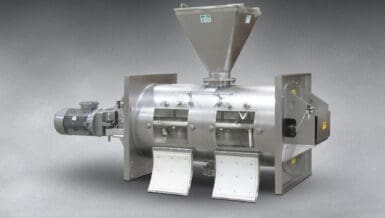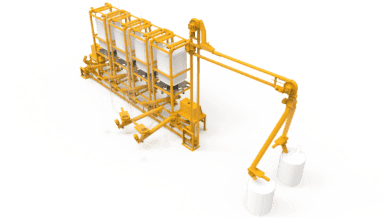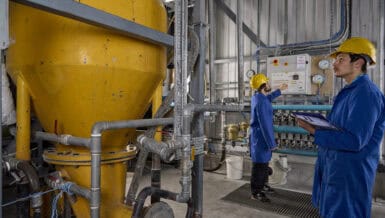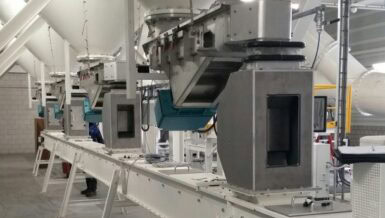Engelsmann Product Developer Viktor Quindt addresses common problems to be considered and provides an outlook for the future trends of the coming years.
Why does the processing of bulk materials often present difficulties?
The various properties of the bulk material often prove to be the greatest challenge. Many bulk materials tend to form dust, while others are high in fat or particularly breakable. And as if different bulk materials presenting peculiarities was not enough, some identical products even tend to react differently in specific environments. A typically unproblematic product can clump when transported over long distances or react differently than in a tempered space when it is exposed to high humidity and temperatures. Naturally this influences the equipment used and must be considered at all times.
What does an operator have to watch out for when choosing the right bulk material technology?
To ensure that a production process is not pointlessly interrupted and to fully exploit the machine’s production potential, the technology used must be matched perfectly to the task at hand and the bulk material that you want to process. A detailed knowledge of the bulk material, the production process and the specific site conditions is crucial here. The easiest way to test these factors is by means of conducting tests in a pilot plant. The customer provides the original product for the tests and the manufacturer emulates the process, whereby different machine configurations are tested and compared to each other. Oftentimes, it is the subtleties to a machine’s settings that decide whether a required throughput performance can be reached or not. Here, the manufacturer’s experience and expertise matter above all.
What problems can occur when emptying bulk goods and what is a common way that operators deal with them in practice?
Fast, continually and without residues – this is how you should ideally empty a container. Products that tend to form agglomerates can bring the emptying process to a halt, if no or only some preventive counter measures have been taken. In conjunction with badly-sealed systems or a leaky setting or attachment process, dust-forming products can lead to an extreme high dust exposure, affecting both the operators and the surrounding production environment. Moreover, it is important that operators not only keep an eye on the emptying process, but downstream processes as well. Compacting bulk materials, for instance, which can only be removed from their containers using discharge aids, will likely also be difficult to deliver to the next process step. Additional equipment, such as lump breakers, passing sieves und the like, can often be integrated into the emptying system without occupying too much space.
What assistance and products can you offer to the operators to help them solve these issues?
We have set up our product range bearing in mind ways that we can provide solutions suitable for all tasks and bulk materials. When it comes to big bag emptying, we capitalize on two different concepts: the BasicLine series as a cost-effective system for simple emptying jobs and the PremiumLine series with which we can cover everything from demanding emptying jobs to individually designed emptying stations. Both systems are modularly structured, enabling you to add additional equipment as needed. Due to the fact that we have specialized in sifting, mixing, conveying and metering bulk materials, we’re keeping not solely the emptying process, but all up- and downstream processes in mind. Aside from self-sufficient emptying stations, we also plan and manufacture entire system units.
What trends are you currently observing in terms of bulk material technology and where do you think this journey will lead us in the next few years?
First and foremost, we are observing that in some sectors hygienic requirements for the equipment used are increasing, and, as a consequence, documentation requirements and qualification standards for the systems are becoming stricter. The tightness of the components is also playing an increasingly important role. Another trend is that there is a higher demand for flexible solutions that can be adapted to the changing conditions. This can only be achieved using modular solutions which, ideally, can be adjusted subsequently without the need to disassemble the entire system. We implemented this in the emptying sector, for example, with a station where the conveyor and metering device – depending on what product you would like to empty – can easily be changed. And even during the filling operation it is becoming more and more apparent that customers no longer want to be restricted in that they have to use a certain container type for their system and instead feel free to also use big bags and barrels or small containers, if they so desire.











